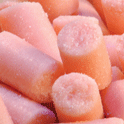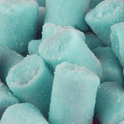|
|
个别断奶的Dahl SS大鼠在喂食8%盐饲料时可在短短2周内快速地产生血压升高(> 180毫米汞柱),虽然这个品系通常需要的平均时间是4-6周(1-4 )。当喂食低盐饲料时,高血压伴随血管和肾脏病变也会发生,但需要的时间通常较长 (5,6)。动物年龄似乎也在盐诱导高血压的过程中发挥作用。Dahl SS大鼠断奶3到6个月后喂食高盐饲料(8%)与那些断奶后立即喂食高盐饲料的相比会以较慢的速度发展高血压。通常在喂食这种饲料后动物最多只可以生存多8个月,不管在开始时它们的年龄是多少(5)。相反,Dahl SR大鼠在喂食高盐饲料后几个月都不会呈现高血压或心血管和肾脏病变(1,6-8)。
正如其名,SHR大鼠在生命早期(5-6周)就会自发性地升高血压,最终发展成高血压(9)。由于其外周阻力和正常心输出量表现类似于人类的高血压,这种品系被认为是研究原发性高血压良好的榜样(10)。在饲料中加入氯化钠(?7%)以增加心血管阻力和/或1%NaCl生理盐水可以进一步提高SHR大鼠的血压(11,12)。
作为膳食诱导高血压模型,小鼠没有被广泛使用。近交系小鼠如C57BL / 6喂食高盐(8%)纯化饲料可以发展血压升高,虽然这个过程需要几个月时间(13)。对小鼠基因组序列分析与转基因和基因敲除小鼠品系的建立使研究人员可以调查,个别基因在正常和病理条件下对特定的肾生理机制发挥的作用(14)。
其它可以影响高血压表型的膳食因子
钠以外的膳食因子也可以对啮齿目动物模型的高血压的程度和发生起重要作用。当把4%氯化钠加入粗饲料和纯化成分的饲料中,喂食纯化饲料的Dahl SS大鼠比喂食粗饲料的大鼠有较高的血压和较严重的肾功能损害15)同样有趣的是,那些喂食4%氯化钠纯化饲料大鼠的后代有较高的血压,不论它们断奶后的膳食如何,这表明怀孕期间母亲所摄取膳食可以在后代中促进高血压。那么背景膳食(粗饲料vs纯化饲料)在这种情况如何影响结果?原因尚不清楚, 但可能涉及粗饲料和纯化饲料在矿物水平(如钠和钾)、蛋白源、植物化合物的存在与否、碳水化合物类型和/或纤维素水平和种类上的根本分歧。典型的纯化饲料含有约0.1%钠(0.25%氯化钠),而粗饲料含有约0.3-0.4%钠(0.75-1.0%氯化钠)。含大豆蛋白(粗饲料常见的蛋白质来源)的粗饲料与含有酪蛋白 (纯化饲料中蛋白质的主要来源,)的饲料相比,已被证实可以抑制自发性高血压大鼠(SHR)高血压的发展(16)。大豆蛋白的确含有一种植物雌激素,染料木素,已被证实可减轻由氯化钠引起的血压上升(17)。由于酪蛋白不含植物雌激素,以粗饲料和纯化饲料喂养的动物的血压差异可能部分源于染料木素和其他植物雌激素在粗饲料中的不同水平(18)。
含正常水平氯化钠但高果糖或蔗糖(约60%的热量)的饲料可以令各种啮齿目动物模型(如Dahl盐敏和自发性高血压大鼠)升高血压(19-23),从而允许研究人员评估代谢综合征的许多因素,包括高甘油三酯血症和胰岛素拮抗(21,22)。虽然喂食高蔗糖或果糖饲料的Dahl大鼠呈现高血压,但是只有当较高盐水平(6%)与高蔗糖/果糖联合时,高血压才会恶化,死亡率也显著增加(24,25)。远交大鼠品系如SD和Wistar大鼠(在肥胖研究中广泛使用)在喂食高果糖(60%)饲料时也可以呈现出代谢综合征的许多症状(高血压、胰岛素拮抗和高甘油三酯血症)(21 26),以及高血压和肥胖并行发展(27-29)。
正如人们所料,膳食措施不仅可以提升血压,也可以降低高血压的程度。与人类的研究结果类似, 8%氯化钠饲料造成的高血压可以通过额外补充钾来预防的(2,30)。在饲料中补充抗氧化剂(如维他命E和C)已被证明可在易发中风、自发性高血压或Dahl 盐敏等症的大鼠中降低血压(31 - 33)。因此,这表明,这些微量营养素摄入不足可能促进高血压。
我们已经简要地涉及了可被用来研究膳食诱发高血压的疾病模型。应该明确的是,尽管某些膳食因素可促进某种表型 (如钠诱发高血压),其他的可能会促进多种表型(如高果糖膳食促进胰岛素拮抗、高甘油三酯血症和高血压)。至于每个研究员具体的目标和需求会有所不同,对动物品系和饲料的精心选择和控制是获得可重复且有用的表型不可或缺的重要步骤。
Reference List
1. Dahl LK: Salt and hypertension. Am. J. Clin. Nutr. 25: 231-244, 1972
2. Ogihara,T, Asano,T, Ando,K, Sakoda,H, Anai,M, Shojima,N, Ono,H, Onishi,Y, Fujishiro,M, Abe,M, Fukushima,Y, Kikuchi,M, Fujita,T: High-salt diet enhances insulin signaling and induces insulin resistance in Dahl salt-sensitive rats. Hypertension 40:83-89, 2002
3. Tian,N, Thrasher,KD, Gundy,PD, Hughson,MD, Manning,RD, Jr.: Antioxidant treatment prevents renal damage and dysfunction and reduces arterial pressure in salt-sensitive hypertension. Hypertension 45:934-939, 2005
4. Cowley,AW, Jr., Stoll,M, Greene,AS, Kaldunski,ML, Roman,RJ, Tonellato,PJ, Schork,NJ, Dumas,P, Jacob,HJ: Genetically defined risk of salt sensitivity in an intercross of Brown Norway and Dahl S rats. Physiol Genomics 2:107-115, 2000
5. Dahl LK, Knudsen KD, Heine MA, Leitl GJ: Effects of chronic excess salt ingestion. Modification of experimental hypertension in the rat by variations in the diet. Circulation Research. 22:11-18, 1968
6. Rapp JP, Dene H: Development and characteristics of inbred strains of Dahl salt-sensitive and salt-resistant rats. Hypertension 7: 340-349, 1985
7. Rapp JP: Dahl salt-susceptible and salt-resistant rats: A review. Hypertension 4: 753-763, 1982
8. Inoko M, Kihara Y, Morii I, Fujiware H, Sasayama S: Transition from compensatory hypertrophy to dilated failing left ventricles in Dahl salt-sensitive rats. Am. J. Physiol. 267 (Heart Circ. Phsyiol. 36): H2471-H2482, 1994
9. Okamoto K, Aoki K: Development of a strain of spontaneously hypertensive rats. Jap Circ J 27: 282-293, 1963
10. Ferrone R, Walsh G, Tsuchiya M, Frohlich E: Comparison of hemodynamics in conscious spontaneous and renal hypertensive rats. Am. J. Physiol. 236(3): H403-H408, 1979
11. Aoki K, Yamori Y, Ooshima A, Okamotoa K: Effects of high or low sodium intake in spontaneously hypertensive rats. Jap Circ J 36: 539-545, 1972
12. Chyrsant SG, Walsh GM, Kem DC, Frohlich ED: Hemodynamic and metabolic evidence of salt sensitivity in spontaneously hypertensive rats. Kidney International 15: 33-27, 1979
13. Yu,Q, Larson,DF, Slayback,D, Lundeen,TF, Baxter,JH, Watson,RR: Characterization of high-salt and high-fat diets on cardiac and vascular function in mice. Cardiovasc.Toxicol. 4:37-46, 2004
14. Cvetkovic B, Sigmund CD: Understanding hypertension through genetic manipulation in mice. Kidney International 57: 863-74, 2000.
15. Mattson,DL, Kunert,MP, Kaldunski,ML, Greene,AS, Roman,RJ, Jacob,HJ, Cowley,AW, Jr.: Influence of diet and genetics on hypertension and renal disease in Dahl salt-sensitive rats. Physiol Genomics 16:194-203, 2004
16. Nevala R, Vaskonen T, Vehniainen J, Korpela R, Vapaatalo H: Soy based diet attenuates the development of hypertension when compared to casein based diet in spontaneously hypertensive rat. Life Sci 66(2): 115-124, 2000
17. Cho TM, Peng N, Clark JT, Novak L, Roysommuti S, Prasain J, Wyss JM: Genistein Attenuates the Hypertensive Effects of Dietary NaCl in Hypertensive Male Rats. Endocrinology 148(11):5396-5402, 2007
18. Jensen MN, Ritskes-Hoitinga M: How isoflavone levels in common rodent diets can interfere with the value of animals models and with the experimental results. Laboratory Animals 41: 1-18, 2007
19. Melancon S, Bachelard H, Badeau M, Bourgoin F, Pitre M, Lariviere R, Nadeau A: Effects of high-sucrose feeding on insulin resistance and hemodynamic responses to insulin in spontaneously hypertensive rats. Am. J. Physiol. Heart Circ Physiol 290: H2571-H2581, 2006
20. Pitre M, Nadeau A, Bachelard H: Insuilin sensitivity and hemodynamic responses to insulin in Wistar-Kyoto and spontaneously hypertensive rats. Am. J. Physiol. 271 (Endocrinol. Metab. 34): E658-E668, 1996
21. Oron-Herman M, Kamari Y, Grossman E, Yeger G, Peleg E, Shabtay Z, Shamiss A, Sharabi Y: Metabolic Syndrome: Comparison of the two commonly used animals models. Am. J. Hypertens. 21: 1018-1022, 2008
22. Sanchez-Lozada,LG, Tapia,E, Jimenez,A, Bautista,P, Cristobal,M, Nepomuceno,T, Soto,V, Avila-Casado,C, Nakagawa,T, Johnson,RJ, Herrera-Acosta,J, Franco,M: Fructose-induced metabolic syndrome is associated with
glomerular hypertension and renal microvascular damage in rats. Am J Physiol Renal Physiol 292: F423-F429, 2007
23. Vasudevan,H, Xiang,H, McNeill,JH: Differential regulation of insulin resistance and hypertension by sex hormones in fructose-fed male rats. Am J Physiol Heart Circ Physiol 289:H1335-H1342, 2005
24. Sharma N, Okere IC, Duda, MK, Johnson J, Yuan CL, Chandler MP, Ernsberger P, Hoit BD, Stanley WC. High fructose diet increases mortality in hypertensive rats compared to a complex carbohydrate or high fat diet. Am J Hypertens 20: 403-409, 2007
25. Sharma N, Okere IC, Barrows BR, Lei B, Duda, MK, Yuan CL, Previs SF, Sharov VG, Azimzadeh AM, Ernsberger P, Hoit BD, Sabbah H, Stanley WC. High-sugar diets increase cardiac dysfunction and mortality in hypertension compared to low-carbohydrate or high-starch diets. J Hypertens 26: 1402-1410, 2008
26. Hwang IS, Ho H, Hoffman BB, Reaven GM: Fructose-Induced Insulin Resistance and Hypertension in Rats. Hypertension 10: 512-516, 1987
27. Dobrian,AD, Davies,MJ, Prewitt,RL, Lauterio,TJ: Development of hypertension in a rat model of diet-induced obesity. Hypertension 35:1009-1015, 2000
28. Dobrian,AD, Schriver SD, Lynch T, Prewitt,RL: Effect of salt on hypertension and oxidative stress in a rat model of diet-induced obesity. Am J Physiol Renal Physiol 285: F619-F628, 2003
29. Yamakawa T, Tanaka S, Tamura K, Isoda F, Ukawa K, Yamakura Y, Takanashi Y, Kiuchi Y, Umemura S, Ishii M, Sekihara H: Wistar fatty rat is obese and spontaneously hypertensive. Hypertension 25: 146-150, 1995
30. Dahl LK, Letil G, Heine M: Influence of dietary potassium and sodium/potassium molar ratios on the development of salt hypertension. J Exp Med 136: 318-330, 1972
31. Kopilas,MA, Dang,LNT, Anderson HDI: Effect of dietary chromium on resistance artery function and nitric oxide signaling in the sucrose-fed spontaneously hypertensive rat. J Vasc Res 44:110-118, 2007
32. Vasdev,S, Gill,V, Parai,S, Gadag,V: Dietary vitamin e supplementation attenuates hypertension in Dahl salt-sensitive rats. J Cardiovasc Pharmacol Ther 10:103-111, 2005
33. Noguchi,T, Ikeda,K, Sasaki,Y, Yamamoto,J, Yamori,Y: Effects of vitamin e and sesamin on hypertension and cerebral thrombogenesis in stroke-prone spontaneously hypertensive rats. Clin Exp Pharmacol Physiol 31 (Suppl 2): S24-S26, 2004
|







